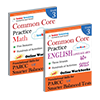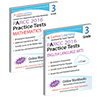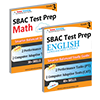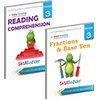If you don’t have an access code, you can still access hundreds of free grade appropriate learning resources. Click here to explore.
Use the table below to review the Lumos tedBook™ 3rd Grade Math and Language Arts Literacy Domains, Lesson Names, Topics, along with their recent Common Core State Standard (CCSS) Correlations.
If you haven’t purchased a Lumos tedBook, use the button below to learn more about the books available for 3rd grade students.
| Course Name: Grade 3 Math Mastery and Test Preparation – Practice Tests and Workbooks: CCSS Aligned | ||||
| Lesson Name | ||||
| Operations and Algebraic Thinking | ||||
Understanding Multiplication 3.OA.1
Domain: Operations & Algebraic Thinking |
||||
Understanding Division 3.OA.2
Domain: Operations & Algebraic Thinking |
||||
Applying Multiplication & Division 3.OA.3
Domain: Operations & Algebraic Thinking |
||||
Finding Unknown Values 3.OA.4
Domain: Operations & Algebraic Thinking |
||||
Multiplication & Division Properties 3.OA.5
Domain: Operations & Algebraic Thinking |
||||
Relating Multiplication & Division 3.OA.6
Domain: Operations & Algebraic Thinking |
||||
Multiplication & Division Facts 3.OA.7
Domain: Operations & Algebraic Thinking |
||||
Two-Step Problems 3.OA.8
Domain: Operations & Algebraic Thinking |
||||
Number Patterns 3.OA.9
Domain: Operations & Algebraic Thinking |
||||
| Number and Operations in Base Ten | ||||
Rounding Numbers 3.NBT.1
Domain: Number & Operations in Base Ten |
||||
Addition & Subtraction 3.NBT.2
Domain: Number & Operations in Base Ten |
||||
Multiplying Multiples of 10 3.NBT.3
Domain: Number & Operations in Base Ten |
||||
| Number and Operations – Fractions | ||||
Fractions of a Whole 3.NF.1
Domain: Number & Operations – Fractions |
||||
Fractions on the Number Line 3.NF.2
Domain: Number & Operations – Fractions |
||||
Comparing Fractions 3.NF.3
Domain: Number & Operations – Fractions |
||||
| Measurement and Data | ||||
Time 3.MD.1
Domain: Measurement & Data |
||||
Liquid Volume & Mass 3.MD.2
Domain: Measurement & Data |
||||
Graphs 3.MD.3
Domain: Measurement & Data |
||||
Measuring Length 3.MD.4
Domain: Measurement & Data |
||||
Area 3.MD.5-7
Domain: |
||||
Perimeter 3.MD.8
Domain: Measurement & Data |
||||
| Geometry | ||||
2-Dimensional Shapes 3.G.1
Domain: Geometry |
||||
Shape Partitions 3.G.2
Domain: Geometry |
||||
| Course Name: Grade 3 Language Arts Mastery and Test Preparation – Practice Tests and Workbooks: CCSS Aligned | ||||
| Lesson Name | ||||
| Reading Standards for Literature | ||||
The Question Session RL.3.1
Domain: Reading: Literature |
||||
Tell Me Again… RL.3.2
Domain: Reading: Literature |
||||
Caring Characters & Life’s Lessons RL.3.2
Domain: Reading: Literature |
||||
Calling All Characters RL.3.3
Domain: Reading: Literature |
||||
A Chain of Events RL.3.3
Domain: Reading: Literature |
||||
Setting the Scene RL.3.9
Domain: Reading: Literature |
||||
Figurative Language Expressions RL.3.4
Domain: Reading: Literature |
||||
Parts of One Whole RL.3.5
Domain: Reading: Literature |
||||
Whose Talking Now? RL.3.6
Domain: Reading: Literature |
||||
I Can See It! RL.3.7
Domain: Reading: Literature |
||||
Alike and Different RL.3.9
Domain: Reading: Literature |
||||
| Reading Standards for Informational Text | ||||
The Main Idea Arena RI.3.2
Domain: Reading: Informational Text |
||||
Cause and Effect RI.3.3
Domain: Reading: Informational Text |
||||
Educational Expressions RI.3.4
Domain: Reading: Informational Text |
||||
Special Text Parts RI.3.5
Domain: Reading: Informational Text |
||||
What Did You Already Know? RI.3.6
Domain: Reading: Informational Text |
||||
Connect the Dots RI.3.8
Domain: Reading: Informational Text |
||||
| Writing Standards | ||||
Introducing and Closing Topics W.3.1a
Domain: Writing |
||||
Make Your Ideas Clearer W.3.2
Domain: Writing |
||||
Connecting Ideas W.3.2c
Domain: Writing |
||||
Let’s Talk! W.3.3b
Domain: Writing |
||||
It’s Part of My Purpose W.3.4
Domain: Writing |
||||
Making a Plan W.3.5
Domain: Writing |
||||
Let’s Make It Better W.3.5
Domain: Writing |
||||
Grammar Mistakes W.3.5
Domain: Writing |
||||
I Need to Learn More W.3.7
Domain: Writing |
||||
Write It Down! W.3.8
Domain: Writing |
||||
| Language Standards | ||||
People, Places, and Things L.3.1a
Domain: Language |
||||
Replace Those Nouns L.3.1a
Domain: Language |
||||
Show Me the Action! L.3.1d
Domain: Language |
||||
Tell Me More! L.3.1g
Domain: Language |
||||
Make It Make Sense L.3.1f
Domain: Language |
||||
Mix Up Those Sentences L.3.1i
Domain: Language |
||||
Capitalization Dedication L.3.2a
Domain: Language |
||||
Punctuation Education L.3.2
Domain: Language |
||||
Impressive Possessives L.3.2d
Domain: Language |
||||
Compelling Spelling L.3.2e
Domain: Language |
||||
Syllable Patterns L.3.2f
Domain: Language |
||||
What’s Your Reference Preference? L.3.2g
Domain: Language |
||||
Connect the Word for An Effect L.3.3a
Domain: Language |
||||
The Context Clue Crew L.3.4a
Domain: Language |
||||
Same Name, Different Game L.3.4
Domain: Language |
||||
The Roots and Affix Institute L.3.4b
Domain: Language |
||||
Making Words Work L.3.5a
Domain: Language |
||||
Subscription Information: Remote access to Lumos Information Services’ databases is permitted to individuals or organizations that purchased the book for non-commercial use. However, remote access to Lumos Information Services’ databases from non-subscribing individuals or institutions is not allowed.
Please Contact Us if you would like additional information on subscription to the Lumos Study Programs.





